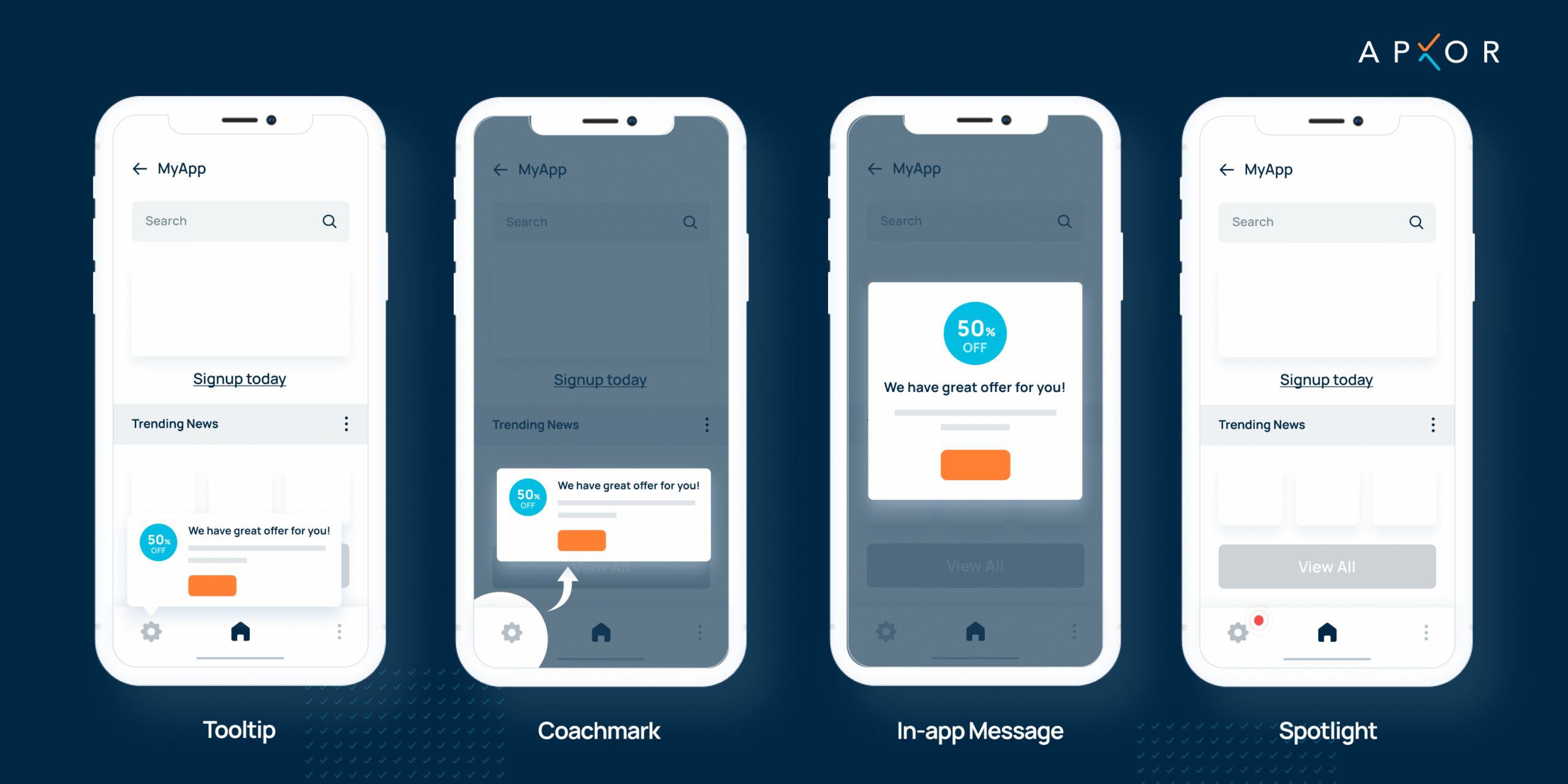When it comes to mobile UX, small changes can have a significant impact on user engagement. One of the most effective tools in achieving this is the power of nudges. These subtle cues or prompts can guide users toward desired behaviors without disrupting their experience. If you want to increase app engagement with gentle nudges, implementing the right strategies is essential.
This article covers five ways to use nudges to enhance your mobile UX and improve user engagement, retention, and satisfaction. Let’s begin by understanding what nudges are in the context of UX.
1. Spotlight Key Features at the Right Time
Users often miss essential features in an app, especially if they are hidden behind a cluttered interface. One way to overcome this challenge is by using contextual nudges to highlight crucial features at the right time.
These nudges can appear as tooltips, banners, or pop-ups that gently prompt users to explore key aspects of your app. Rather than overwhelming users, these nudges provide simple guidance, helping them maximize the benefits of your app.
Example:
Spotify uses contextual nudges to highlight premium features, such as offline playlists, when users attempt to access content exclusive to paid subscribers. This ensures users understand the full scope of the app’s capabilities.
By offering these nudges at the appropriate moment, you enhance user experience without being intrusive.
2. Simplify Onboarding with Guided Walkthroughs
Onboarding is one of the most crucial parts of user engagement. If users find it overwhelming, they may not stick around. To improve onboarding, consider using nudges in the form of guided walkthroughs.
Guided walkthroughs are a series of tooltips or overlays that help users understand your app step by step. They should focus on simplicity and clarity to prevent users from feeling lost or frustrated.
Example:
Binance, a cryptocurrency exchange, uses a guided tour to introduce new users to the platform. This guided experience helps users complete their first transaction smoothly by pointing out key features.
Instead of overwhelming new users with unnecessary information, a personalized nudge can ensure they don’t miss critical steps and help them engage with the app right from the start.
3. Use Social Proof to Build Trust
Users tend to look for validation before committing to something new. Social proof nudges, like user ratings and reviews, can help build trust and influence users’ decisions.
By displaying user ratings, reviews, or showcasing top sellers, you provide reassurance that other people have had positive experiences with your app. This subtle nudge can increase engagement and drive conversions.
Example:
E-commerce apps often display “Best Seller” labels or show high ratings to encourage users to make a purchase. These nudges help users feel more confident in their decisions, leading to higher engagement.
By strategically integrating these nudges, you provide users with the validation they need to take action without overwhelming them.
4. Create Urgency with Limited-Time Offers
Sometimes, users need a little push to act quickly. Limited-time offers or countdown timers are effective nudges that create a sense of urgency and prompt immediate action.
These nudges can trigger a sense of urgency, motivating users to take action before the opportunity expires. Whether it’s a time-sensitive discount, exclusive content, or a flash sale, urgency nudges can drive higher engagement and faster decision-making.
Example:
E-commerce apps like Amazon and eBay display banners such as “Hurry, only 2 hours left for your 10% off!” to encourage users to act quickly. This creates a sense of urgency and increases the likelihood of users making a purchase.
Urgency-based nudges should be used sparingly to avoid overwhelming users. However, when used effectively, they can significantly improve engagement without feeling like pressure.
5. Encourage Habit Formation with Streaks and Reminders
Once users engage with your app, it’s essential to keep them coming back. One way to do this is by using nudges that encourage habit formation.
Daily engagement nudges, such as streaks, reminders, or notifications, help users develop a routine with your app. By reminding them to take action daily, you increase the chances of long-term retention.
Example:
Duolingo, the language-learning app, uses streak reminders and daily practice goals to encourage users to continue their lessons. If a user misses a day, Duolingo sends a reminder nudge to keep their streak alive.
By incorporating nudges like streaks or reminders, you turn your app into a regular habit, improving user retention and lifetime value.
Conclusion
Using nudges effectively can significantly enhance your mobile UX by improving user engagement and retention. Whether it’s spotlighting key features, simplifying onboarding, or encouraging habit formation, nudges help guide users toward desired actions without disrupting their experience.
Nudge helps product teams deliver real-time, personalized user experiences. By using behavioral data and contextual signals, Nudge makes it easier to automate UX decisions, improving engagement and retention without relying on traditional A/B testing.
As you refine your mobile UX, remember that nudges are powerful tools. They help guide users seamlessly, making their journey more intuitive and engaging. When used correctly, these straightforward prompts can greatly improve user satisfaction and lead to better business results. Start considering how you can add these nudges to your app now and see user engagement rise.
Book a demo and discover how you can implement effective user experiences with our solutions to enhance mobile UX and boost user engagement.
